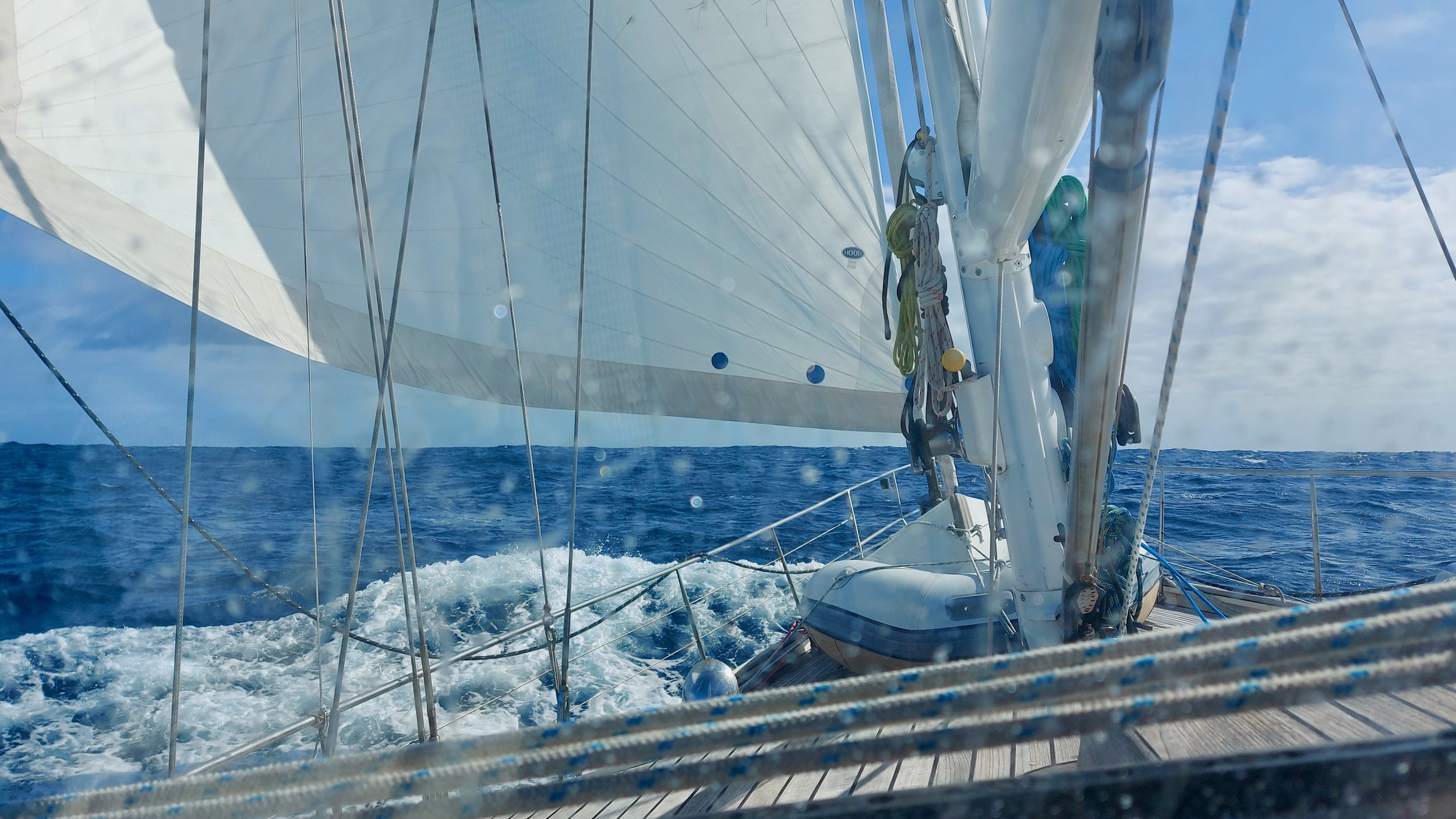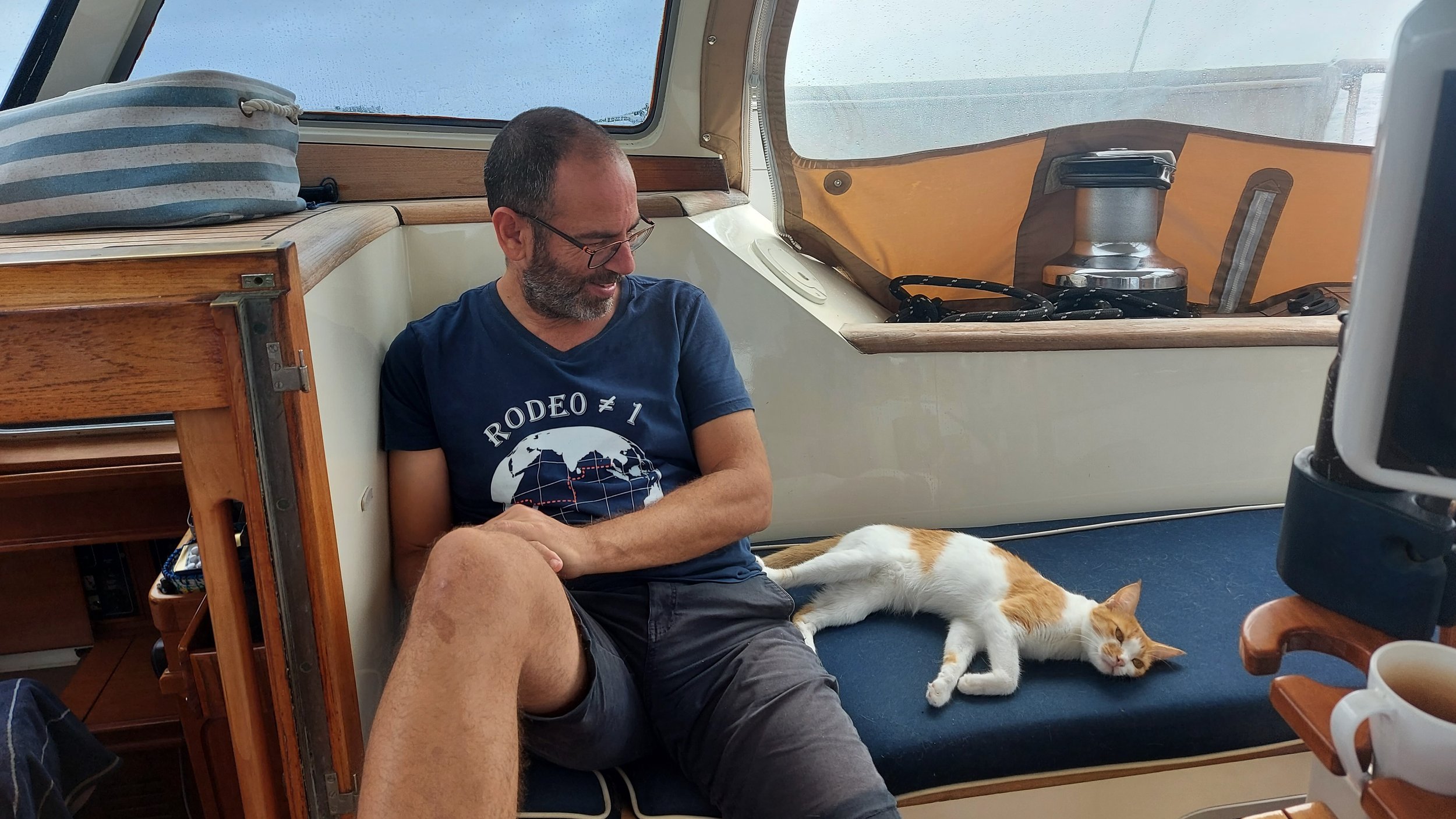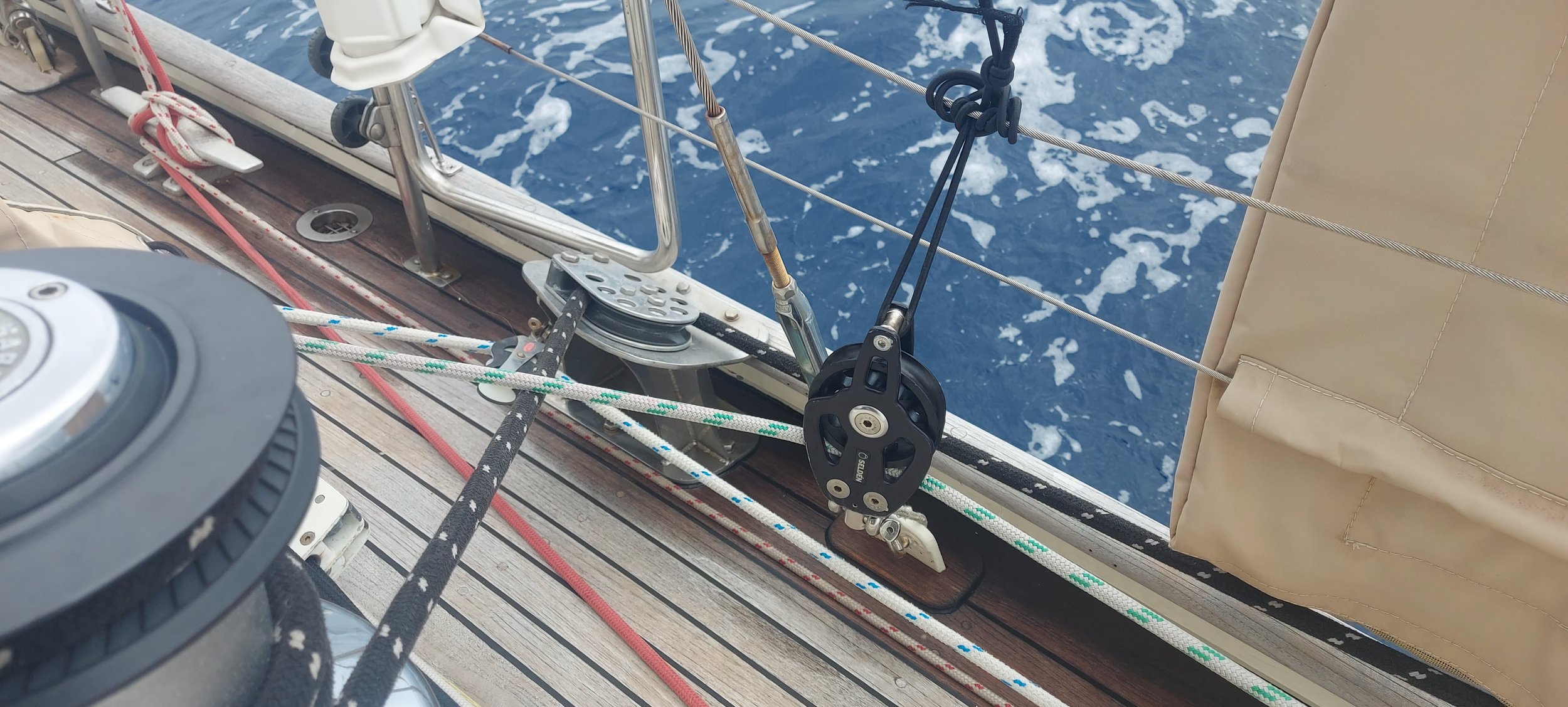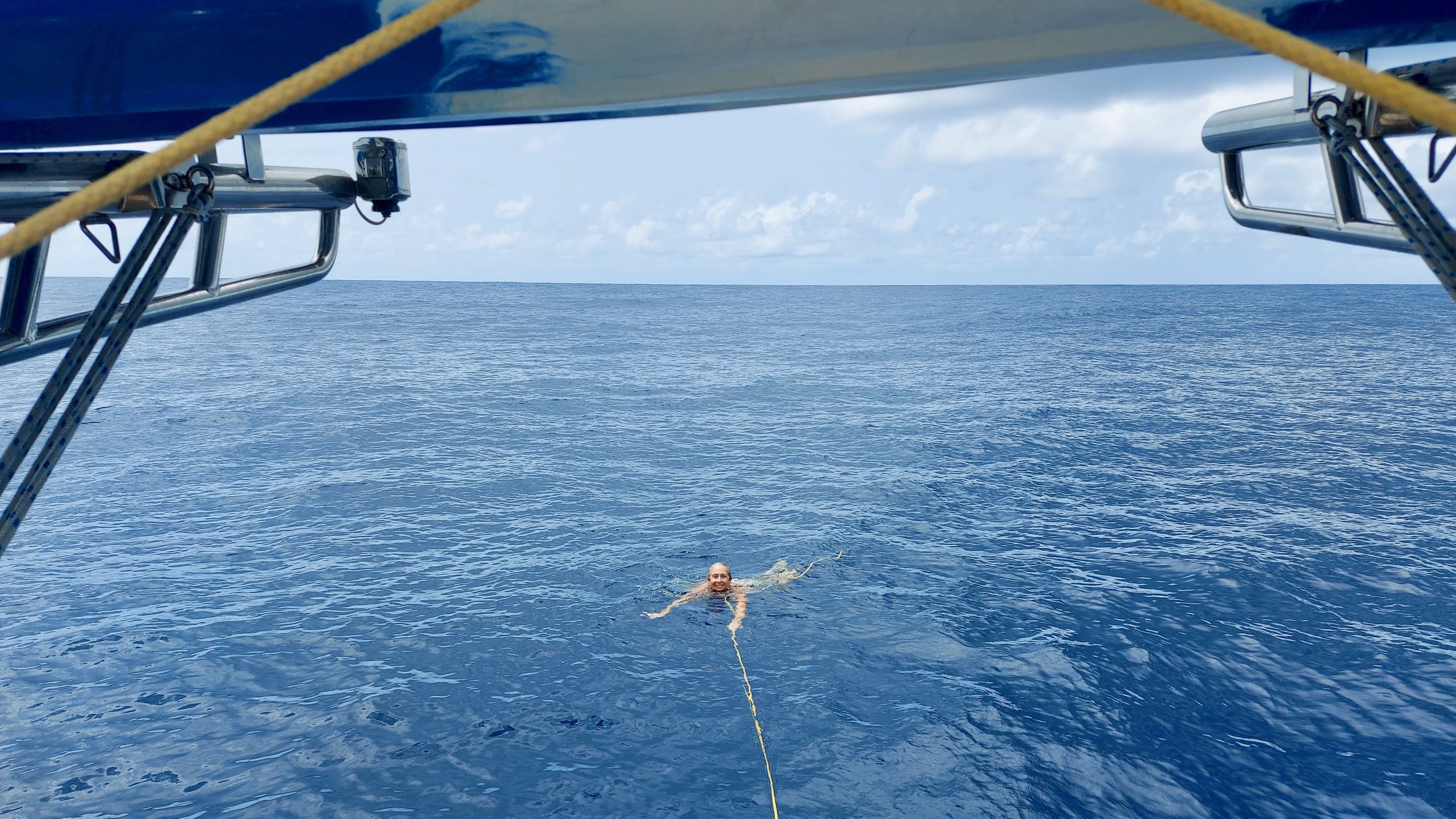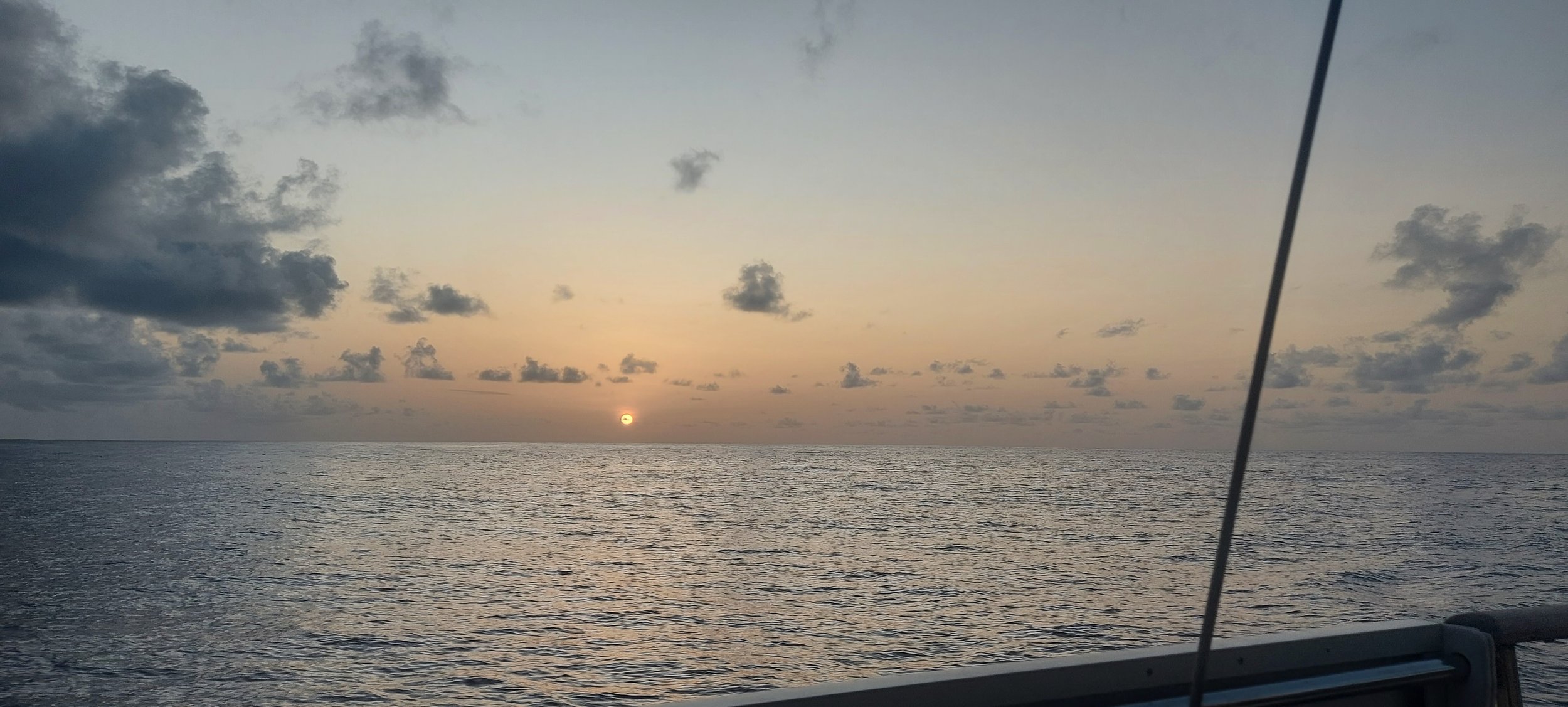Preparing for Battle
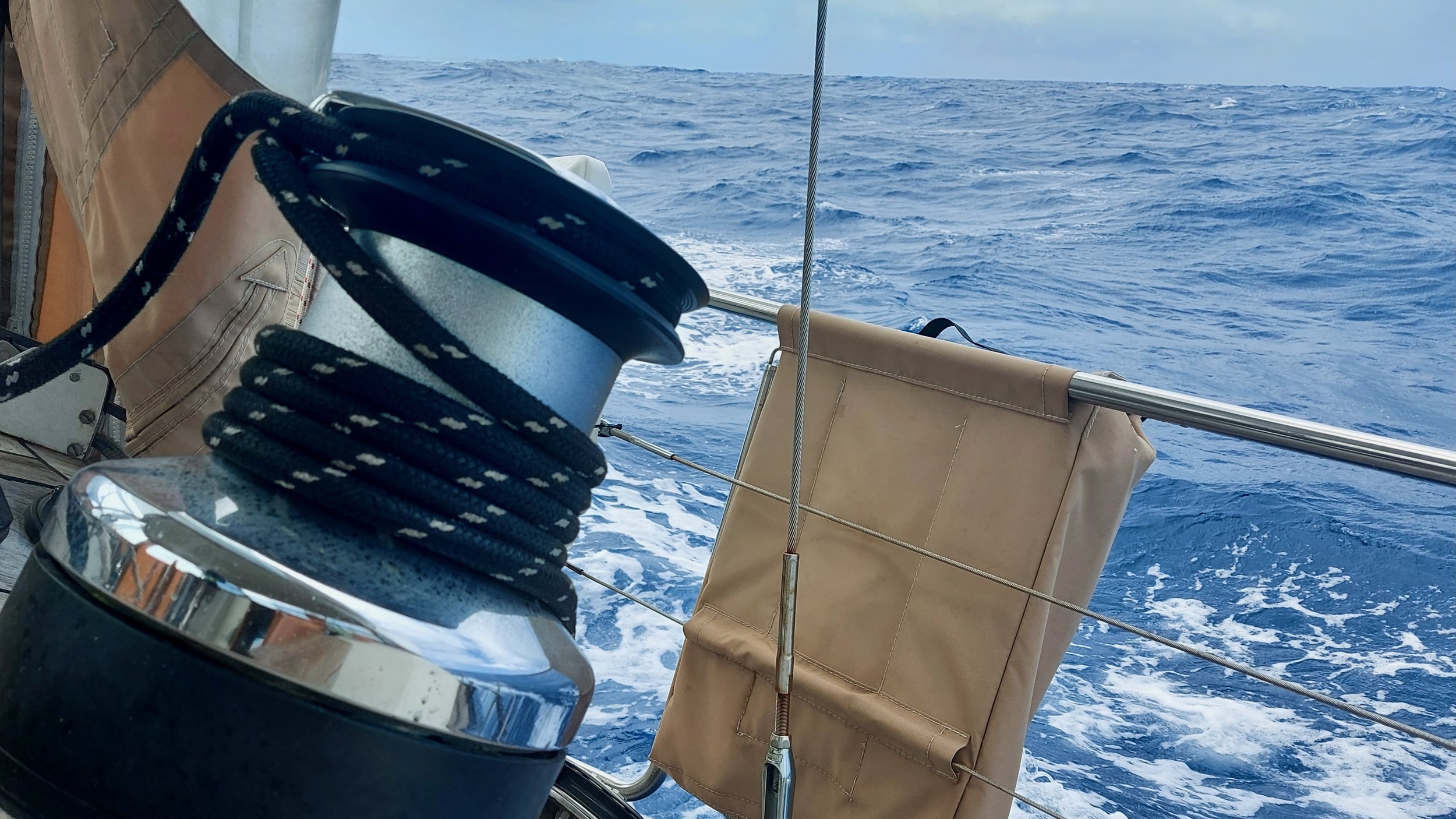
Day 8 : Ascension Island to Azores
Friday, March 25th 2022
As we near the end of the ITCZ, our thoughts have started to turn to the impending Phase 3 of the passage, or what we’re calling the “Uphill Battle”
Sailors have a natural antipathy towards sailing upwind. Quite apart from the inefficiency of possibly having to sail twice the distance to get anywhere, it’s also wetter, windier, and the boat is on more of a lean, so cooking, cleaning, sleeping, showering and yes, visiting the heads, become much more difficult.
For that reason, many sailors try to construct their circumnavigation to consist almost entirely of downwind passages, something that is perfectly feasible if one stays within the trade wind belt. And that’s certainly been our experience in our 22,000 miles so far. 95% of the time, we’ve either been sailing downwind, or had little or no wind at all.
But as we’ve written about already, this particular passage from Ascension to Azores includes a substantial amount of upwind sailing. From the exit point of the ITCZ to the beginning of the Azores High, where the wind will likely disappear, is at least 1,500 miles, and could end up being 500 to 1,000 miles more if we need to tack back and forward if we can’t make the course we hope to.
Since we’re in the northern Trade Wind belt, the wind will be from the NE at a constant 15-20 knots, with occasional 1-2 day periods where it’s more like 25-30 knots. With 2-3 metre waves for much of it, and an additional 5 knots of wind created by our own forward momentum, the one thing we know for sure is it’s going to be wet, windy and relentless.
We expect to be sailing at not much more than 5 knots, as we’ll be trying to make the boat as comfortable as possible – that will mean smaller sails, with our centre of effort lower in the rig, so that we reduce our angle of heel as much as possible. But at those lower speeds, we can expect to make only about 120 miles a day (that’s a lot compared to what we’ve been managing here in the ITCZ, but is comparatively little for trade wind sailing, where we typically manage 150-170 miles a day and occasionally over 200).
If we get lucky with the wind angles, and we “only” have to sail the 1,500 miles upwind, that give us around 13 days non-stop in these conditions. On the other hand, if we have to tack or if the Azores high plays out a certain way, we might have up to 2,500 miles of upwind sailing, or up to 21 days.
So naturally, we’ve been enjoying these last few days in the ITCZ, where we’ve either been motoring, or sailing in the gentlest of gentle breezes.
It’s given us the time to prepare the boat, make some water, do some laundry, transfer some fuel, and make a lot more meals for the freezer to make life easier in Phase 3.
It’s also given us time to gird our loins for what lies ahead. Or in my case, psyche myself out by thinking too much about it.
Surprisingly, it’s also given us a couple of opportunities to practice.
On the two previous occasions we’ve sailed across the equator (in the Indian Ocean in 2020, and the Java Sea in 2018), the periods of long calm were punctuated by violent squalls.
In this particular part of the planet, the pattern has been similar, but the squalls themselves have not been at all violent. Instead we’ve gone from the typical 3-4 knots of breeze, to 10-15 knots inside the squall, occasionally gusting to 18 knots. A very manageable amount of wind.
And since the wind direction in those squalls is either N or NE, it has been a reasonable facsimile of the kind of conditions we’re likely to face in phase 3. A little less wind perhaps, and without the waves that we’ll experience in the more sustained winds further north, but it still been a nice opportunity for us to try out a few different sail combinations to get a sense of what will work best for us over the coming weeks.
Most importantly, it’s also been a good opportunity to remember that really, upwind sailing is not so bad.
We do it so infrequently that we can fall into the trap of demonising it. But the truth is, Steel Sapphire actually has a lovely motion upwind – perhaps even better than downwind. There’s no rolling at all, so the lean is very constant. Which can be waring in some ways, but also makes it easier to plan your movements around the boat. And unlike many more modern boats designed for speed with flatter underwater profiles, Steely doesn’t slam at all going up wind.
The practice opportunities have also given us a sense of what angles we’ll be able to achieve, both in terms of the heel on the boat, but also the angle to the wind and thus the course we’ll be able to sail. And in both cases, I’m feeling more optimistic than I was a few days ago that the next few weeks, instead of being something to dread, will simply be another distinct, memorable, but also perfectly reasonable, part of our journey.
Day 8 Statistics:
Time on passage so far: 7 days, 21 hours
Distance covered in last 24 hours: 112 nm
Average Speed in last 24 hours: 4.7 knots
Official Length of intended Route when we set out: 3,480 nm
Current Projected Distance to Go according to chart plotter: 2,571 nm
Distance Sailed so Far: 960 nm
Total Projected Distance of Route: (2,571 + 960) 3,531 nm
Change in total projected distance in last 24 hours: +11 miles (more extra miles due to not being able to sail our precise course)
Motoring hours on Day 8: 18
Amount of fuel used so far from 350 litre ITCZ fuel budget: 171 litres (31 hours x 5.5 l/h)
Estimated miles to go until end of ITCZ : 205
Amount of motoring miles remaining in ITCZ budget: 179
Number of times I’ve thought “This isn’t so bad – we’re going to be just fine beating for 2-3 weeks non-stop” during the 3 squalls we’ve had in the last 24 hours: 11

